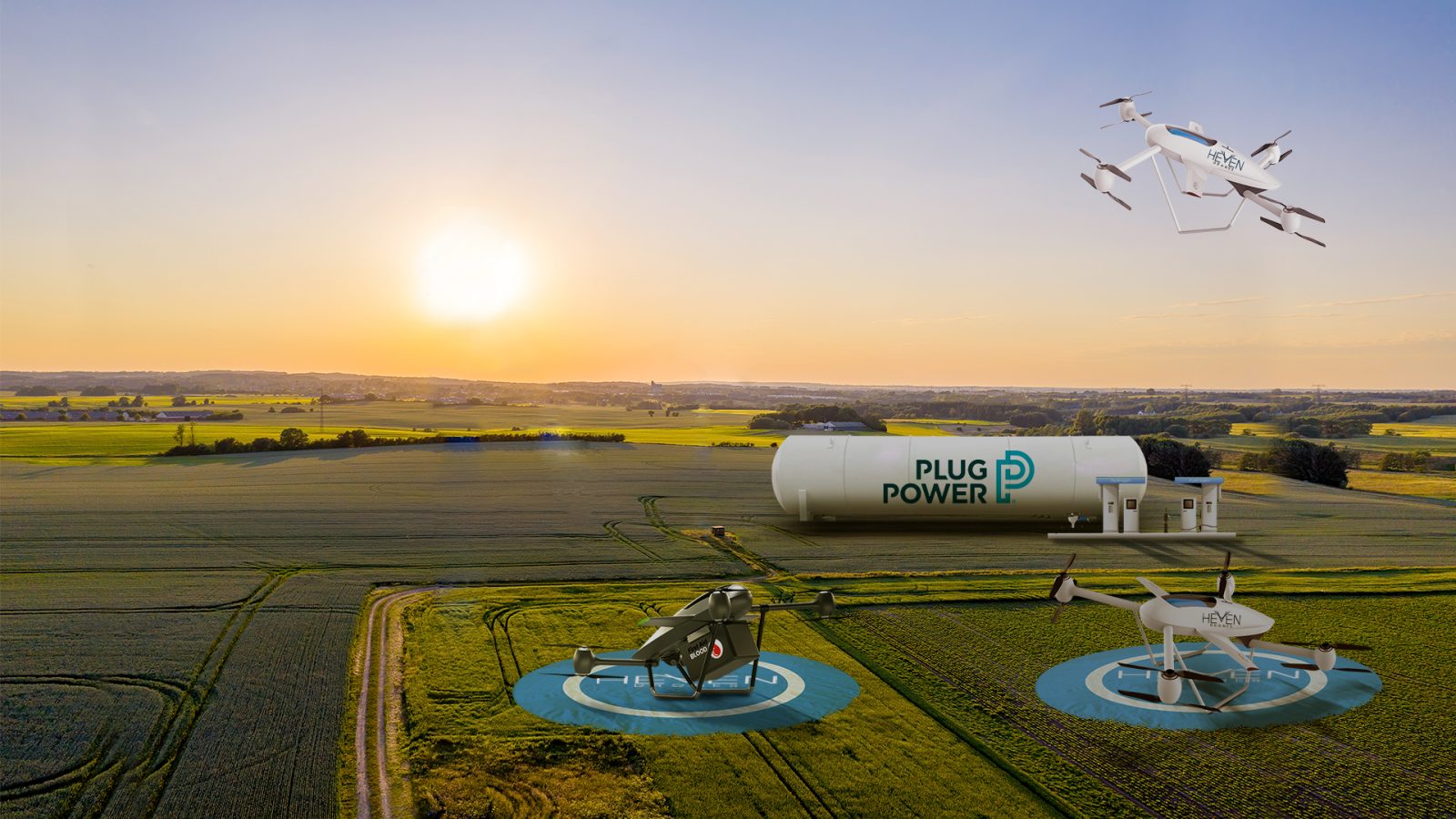
Israel-based hydrogen-powered UAV developer HevenDrones is keeping a very close eye on work in the UK toward creating a 165-mile “drone superhighway,” which is intended to enable a broadening range and rate of aerial activity and services across a huge swath of the nation. Although it is not yet involved in what are the still preliminary stages of that British project, HevenDrones CEO Bentzion Levinson says he believes the program’s potential for rapidly, radically transforming UAV systems, regulations, operation, and tech – including power sources like hydrogen permitting far longer flights – is enormous, and something he’d be keen to join when the time is right.
Levinson discussed his views of the UK superhighway concept, how HevenDrone’s continuing work on hydrogen fuel could benefit craft using it, and the likelihood of similar systems around the globe replicating the transformative British initiative with DroneDJ.
Just how revolutionary do think the UK project could be to drone activity?
Step one of the initial project – using drones to survey national infrastructure – is not revolutionary. However, creating a 165-mile “skyway,” which allows long-distance flights and connects various cities together, is without question revolutionary.
Why? Because this opens the door to far more significant smart-drone use cases, particularly within the logistics sector. Delivery of food, goods, and raw materials, as well as the transportation of medicines and blood, for instance, could be drastically streamlined using this drone corridor by bypassing traffic, especially in congested urban areas. Additionally, utilizing drones for delivery will drastically reduce carbon emissions by replacing outdated forms of transport currently used to the same end.
In short, the drone superhighway represents a massive shift in the way we are approaching the supply chain and has the power to greatly optimize cost-efficiency, improve delivery times, and also take gas-guzzling cars and vans off the roads. This model could also form the basis of similar projects across the world, especially once concrete use cases and partnerships are in place. It may also help support the case for loosening beyond visual line of sight restrictions in the US, which would be a huge catalyst for the North American drone industry.
Read more: UK government approves 165-mile drone superhighway project
How transformative do you believe it may be for the drone sector once the project is functioning?
This drone superhighway presents the UK with an opportunity to develop a multiplicity of rock-solid logistics and delivery use-cases, and build strategic partnerships with major companies, making it a potentially transformative project for its drone sector. Once it’s fully up and running, it would be relatively straightforward to scale both in the UK and abroad given that this range of skyline is not being used for anything else.
What are the biggest challenges you foresee it encountering?
I think the single biggest challenge for this project will be the refueling of drones traveling long distances across the superhighway. Over long distances, one drone, especially a drone powered by lithium batteries, won’t be able to complete a full delivery. (Operators) will have to come up with solutions for recharging or refueling their drones en route. One viable solution would be to use hydrogen power instead of lithium batteries, which will provide greater flight duration and will also be conducive to low-cost refueling stations along the superhighway, using electrolysis to generate clean hydrogen fuel.
So in addition to its potentials for diversifying and expanding drone activity, it may also really accelerate fuel tech progress – especially clean, sustainable hydrogen power?
If this project succeeds in becoming operational as a logistics and supply chain solution, the impact on sustainable mobility will be huge. With respect to clean hydrogen power, there is immense scope for technological innovation at both the level of smart drone infrastructure and clean hydrogen solutions for other forms of mobility. Assuming hydrogen-powered drones are the starting-point, using electrolysis to refuel drones will provide a truly carbon-neutral fuel source that can keep drones working on a more or less 24-hour basis, drastically increasing efficiency and taking many carbon-heavy vehicles off the road.
In a broader sense, clean hydrogen innovation within the drone industry can be easily transferable to the wider mobility ecosystem – aerial, land ,and sea – once there are proven use-cases. Because drones require so much less hydrogen to run than other forms of transport, they make the perfect place to start.
Any plans for HevenDrones to join the UK project?
We are certainly interested in exploring the possibility of using our drones once the logistics/delivery element becomes more tangible. Our drones do have great weight-bearing capabilities and can fly for over two hours without refueling. We’re also working on refueling our drones with clean hydrogen fuel via simple recharging stations that use electrolysis. So, although we have no official involvement at this point, we definitely could see our drones being used in this or similar projects.
Read: HevenDrones unveils its first of three hydrogen-powered drones planned for 2023
Where is HevenDrones now on taking hydrogen tech to the next stage, and what are the next big breakthroughs to look out for?
We already have exciting partnerships in place focused on clean hydrogen fuel for our drones and the development of our refueling hubs using electrolysis. A couple of weeks ago, we signed a Memorandum of Understanding with Thai tech incubator and Royal Air Force contractor, RV Connex, with the view of building out sustainable smart drone infrastructure across Thailand as well as working together on clean hydrogen R&D.
This is just the beginning for us, and we hope to work together on similar projects across the US, UK, Europe and beyond in the near future. We’re also looking into the US regional clean hydrogen hub program, which is starting to gain momentum.
FTC: We use income earning auto affiliate links. More.




Comments